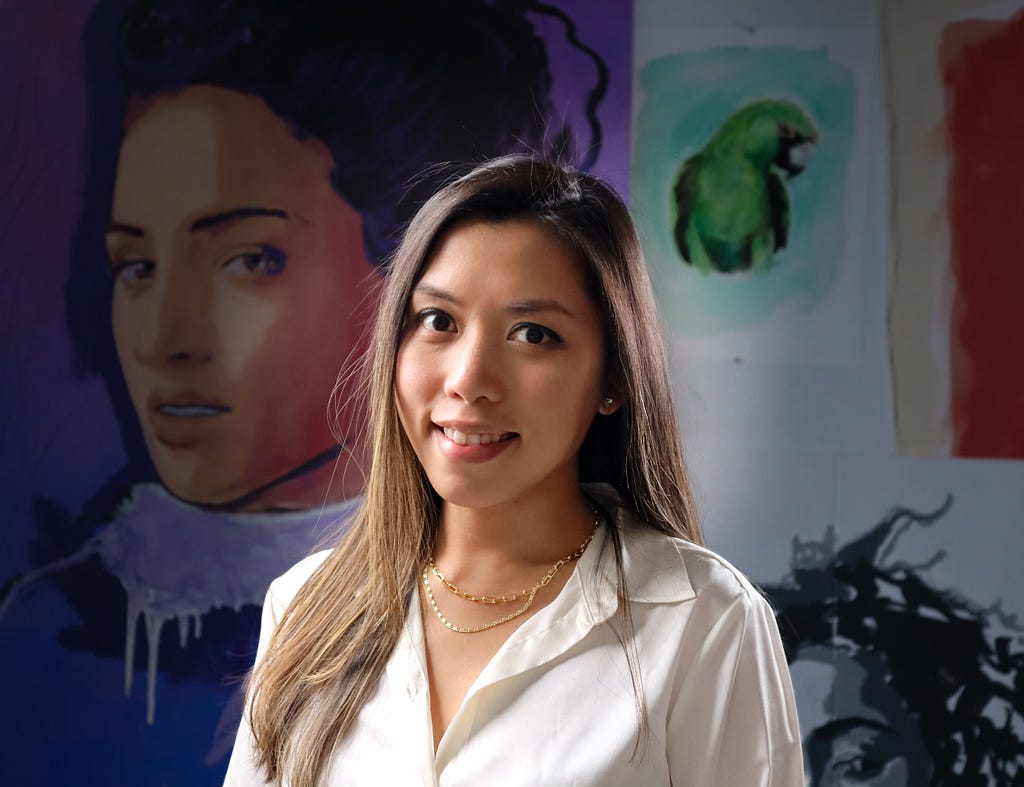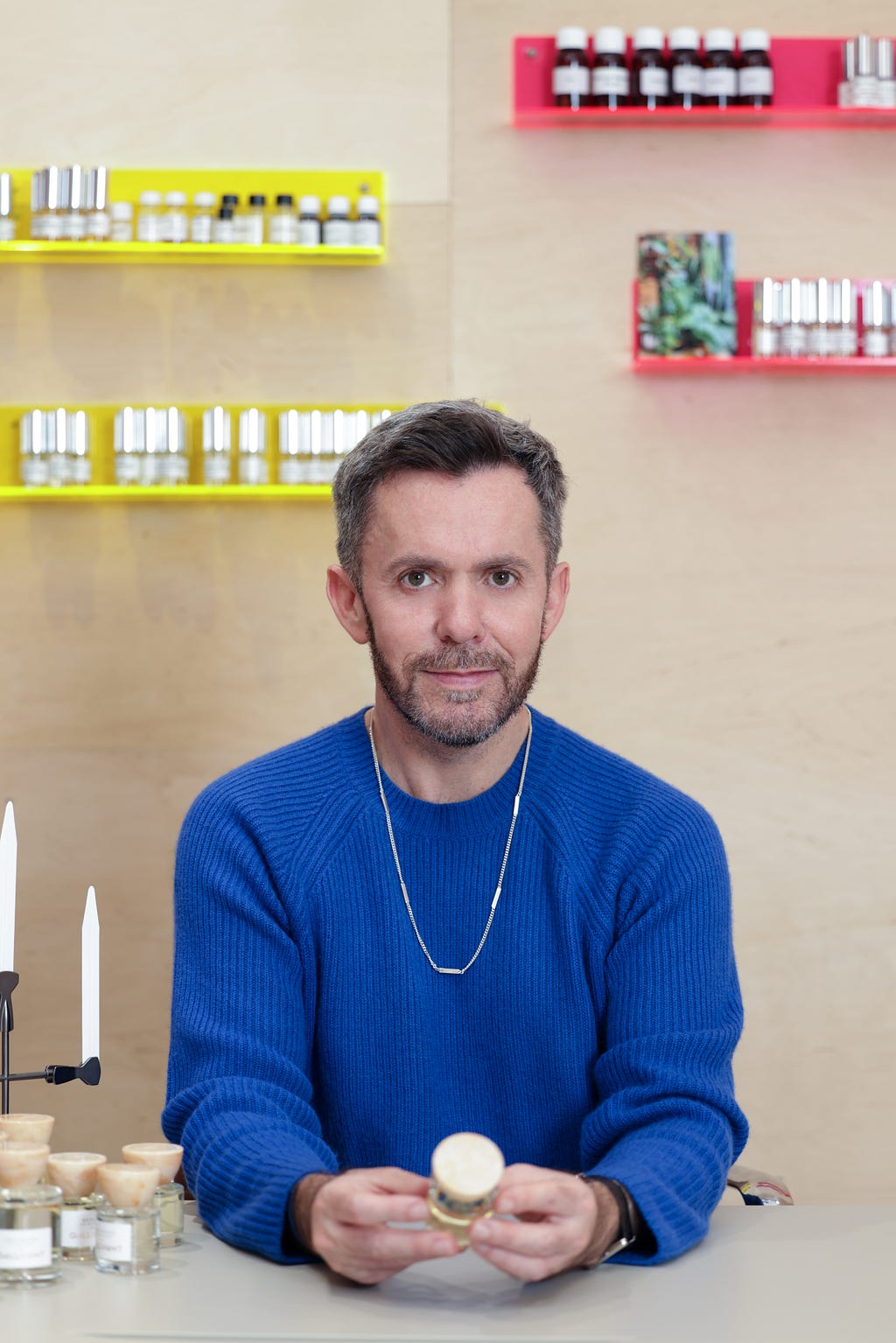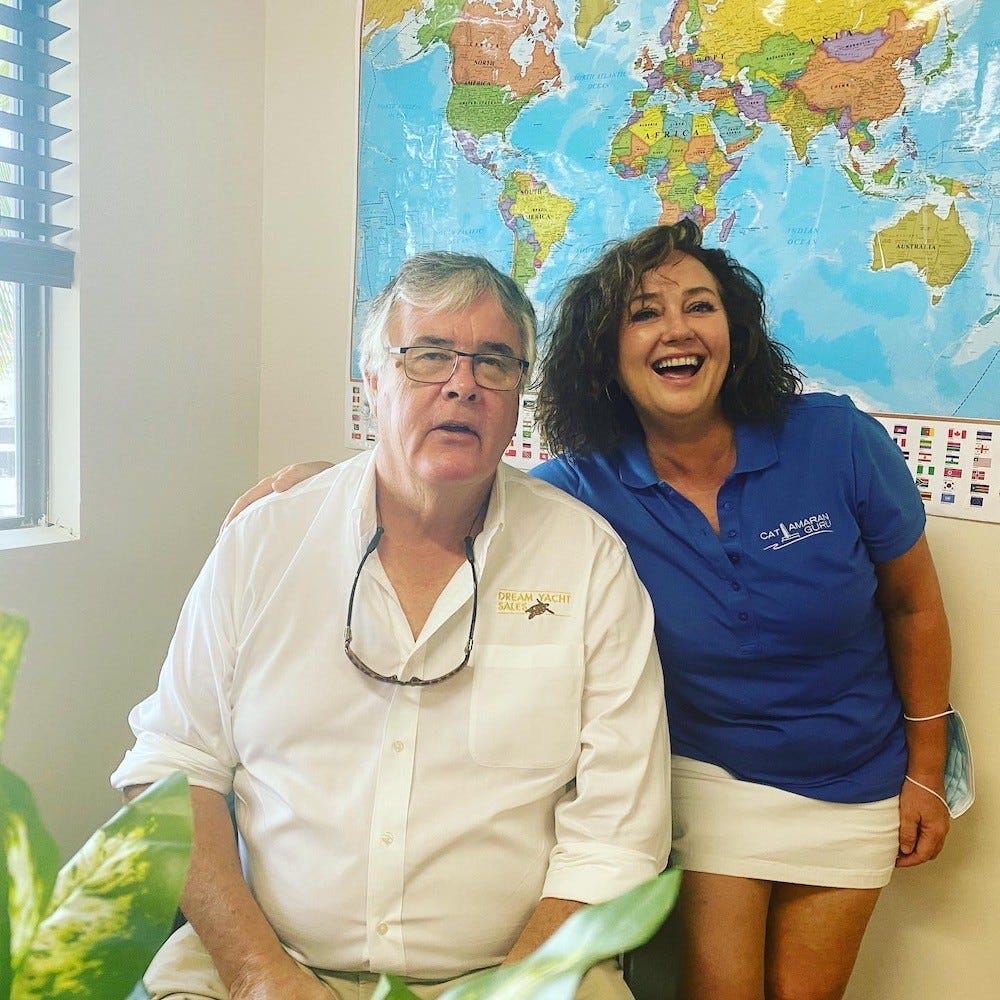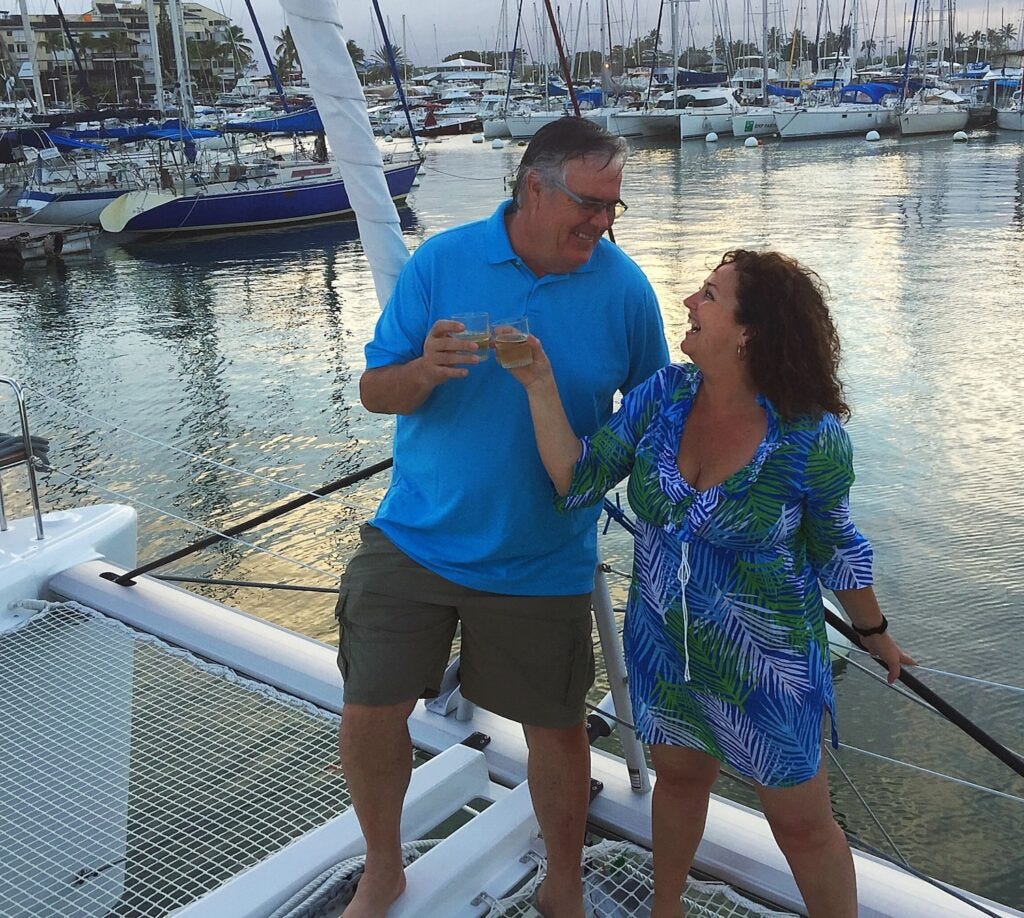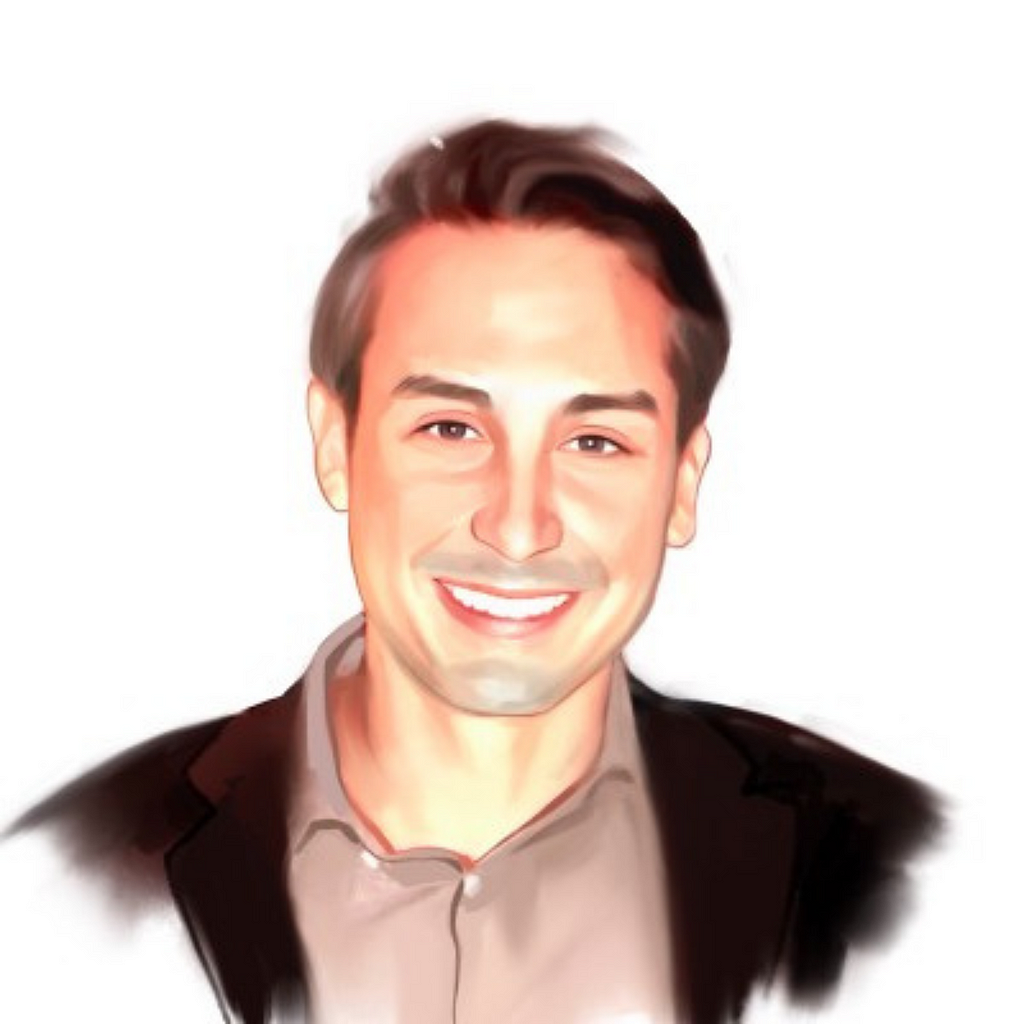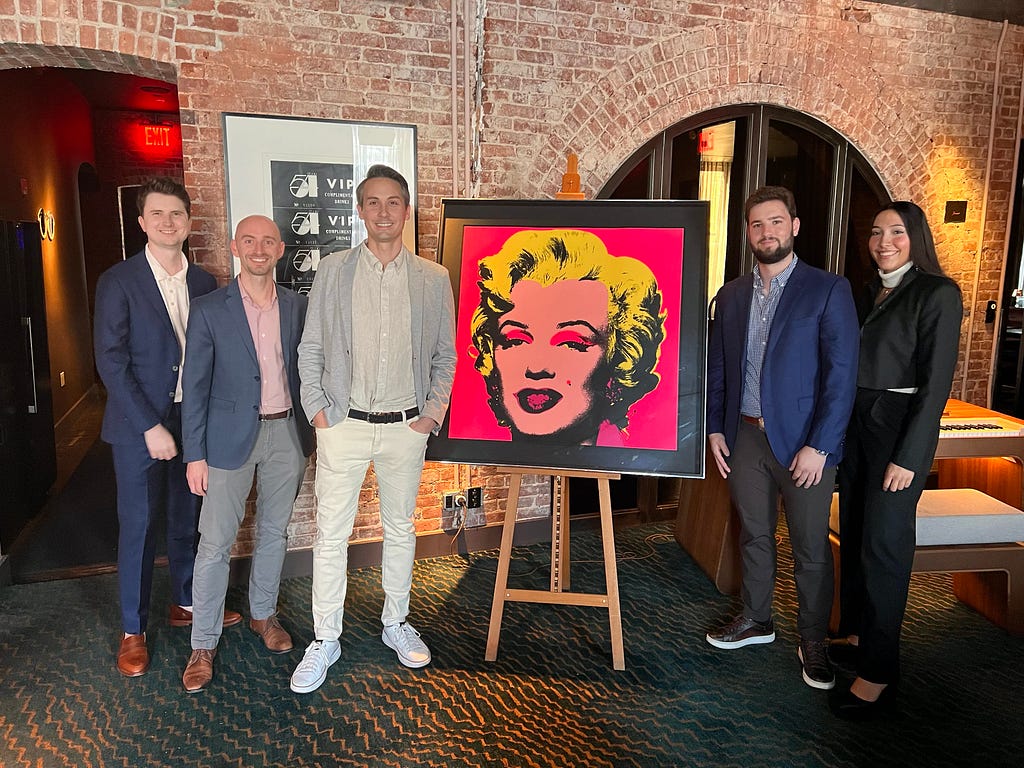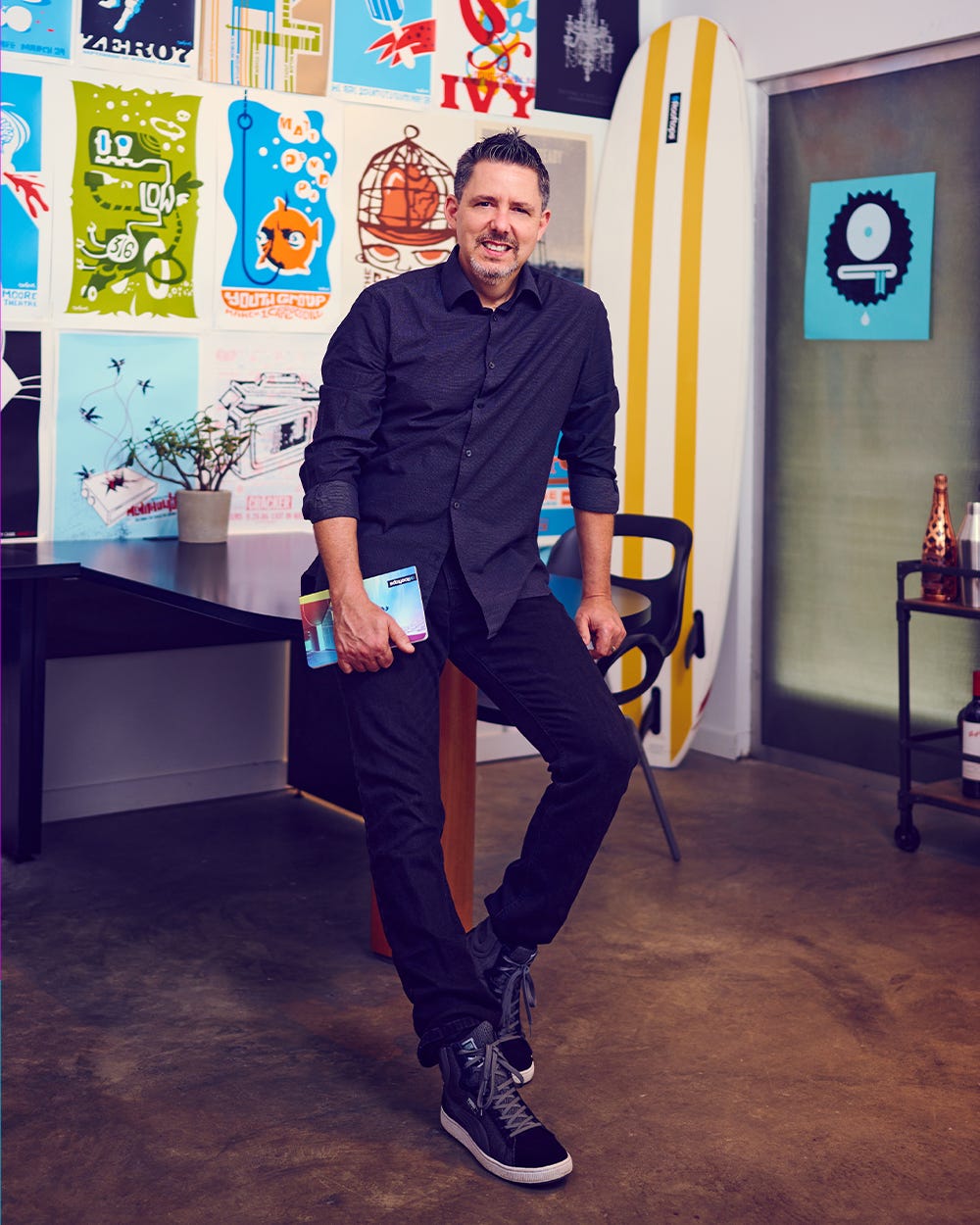Technology is constantly evolving. I’ve learned to embrace continuously learning, and staying updated with the latest technologies and trends. Adapting to change and being open to new ideas is instrumental to staying ahead of the game.
As a part of our series about business leaders who are shaking things up in their industry, I had the pleasure of interviewing Charissa Castillo.
Charissa Castillo Co-Founder of The Da Vinci Eye Apps.
Thank you so much for doing this with us! Before we dig in, our readers would like to get to know you a bit. Can you tell us a bit about your backstory and how you grew up?
I was born and raised in Manila, Philippines, and I consider myself incredibly fortunate to have an amazing brother and supportive parents. My mom is a nurse, while my dad successfully ran a water distillation business. Growing up, I had two career paths in mind: dermatology and advertising. They were completely different, but I was always more drawn to the creative nature of advertising. I loved watching fun and captivating TV commercials and even recorded some of my favorites on my VHS tape recorder.
When I turned 20, my family made a life-changing decision to move to New York City. It was scary at first, but it turned out to be a very fulfilling and adventurous experience beyond my imagination. I was able to transfer to a new school right away and continue my undergrad education,making lifelong friends from all over the world along the way. While finishing my studies, I landed a part-time marketing position at an Austrian-based advertising trade magazine. Then two years later, I obtained my bachelor’s degree in Marketing.
Unfortunately, I graduated during the peak of the great recession, and job opportunities in the advertising industry were pretty scarce. I interviewed with ad agencies and marketing firms without much success. So, I decided to explore other avenues and sought any promising full-time opportunity that came my way. One fine day, I interviewed with an event entertainment company based in midtown Manhattan and instantly hit it off with the owner. It was a small company, and I would be responsible for running most aspects of the business. It was nerve-wracking, considering my limited experience, but with my willingness to learn and my boss’s exceptional level of patience and understanding, I gained invaluable knowledge about self-sufficiency, relentless tenacity, and the resourcefulness required in a small team serving demanding clients in a competitive city. However, the world of private events was also extremely fun and it allowed much room for creativity which I loved. I ended up staying with the company for over 10 years, and it became a formative period in my professional life.
When the pandemic hit in 2020, it was truly one of the most challenging times both personally and professionally. Obviously events were being canceled or postponed left and right, and just like many others, I was furloughed. The uncertainty never seemed to end, and every time it looked hopeful, a new wave or strain surfaced and prompted further lockdowns. Meanwhile, my significant other and current fiancé, who was also furloughed, experienced unexpected success after relaunching his AR drawing app called Da Vinci Eye, which he had originally created a few years back in 2016. By December, the app was thriving, and he asked me to be part of this journey to work on it full time together. I knew I was taking a big risk, but to this day I can confidently say that it was the best decision I’ve ever made.
Is there a particular book, film, or podcast that made a significant impact on you? Can you share a story or explain why it resonated with you so much?
I’ve come across many impactful books, but one particular title that holds a special place in my heart is “The Invention of Wings’’ by Sue Monk Kidd. It’s a few years old, but I’ve re-read it a number of times and it never fails to inspire me. At its core, it is a story about empowering women to change the world. I also love how it has a huge focus on compassion, and highlights how kindness and perseverance can go hand in hand when accomplishing amazing things together.
The best part is that it’s actually a fictionalized account of 2 sisters from South Carolina who were key figures in the abolitionist movement and early leaders in the fight for women’s rights!
Is there a particular story that inspired you to pursue a career in the Augmented Reality industry? We’d love to hear it.
I actually did not plan to pursue a career in the Augmented Reality industry. This path opened itself up to me during my darkest hour and I will always be grateful for that.
Can you share the most interesting story that happened to you since you began this fascinating career?
There have been so many memorable experiences that it’s truly difficult to pick just one. Each day brings a new story or a cool new discovery. One recent standout was the realization of how our apps have become a tool for decorating ceramics, specifically in Brazil, showcasing its accessibility and versatility. And just a few weeks prior, we learned that our apps were being utilized for commissioned projects for a prominent event in the US. It’s crazy to see how people find ways to use the app and we’re always blown away by it.
Can you share a story about the funniest mistake you made when you were first starting? Can you tell us what lesson you learned from that?
I’m not quite sure if this is the funniest mistake I made, but it’s certainly one that I still constantly laugh about. I had been trying to create captivating content for our social media accounts for months, and one day I thought that it would be fun to show us using the app to draw the “Inspiration Photo of the Day”, which was a cat looking off at a distance, then showing a montage of all the other drawings our users have already created of the same photo. I synced it to the music, added transitions, and made sure the pacing was quick. Then suddenly it became our first reel that got over 20k views in one day! I was so proud of myself until one person commented, “um, totally different cat?”
As it turned out, the cat in the photo and the cat in the drawings were two totally different cats! The photos were very similar but the major giveaway was that each cat was looking in completely different directions. I find myself randomly remembering this and laughing until today.
None of us are able to achieve success without some help along the way. Is there a particular person who you are grateful towards who helped get you to where you are? Can you share a story about that?
I owe a lot to the people who have had a big impact on my life, but it’s my mom who has been the biggest driving force behind where I am today. If it weren’t for her, I wouldn’t even be here in the US, living a completely different life with a whole different career path. My mom is the hardest working person I know. Her work ethic is unparalleled, and her determination knows no bounds. Witnessing her relentless drive, especially from a young age, has truly paved the way for my own accomplishments.
Are you working on any exciting new projects now? How do you think that will help people?
We’re always working on new projects, finding ways to make technology more accessible for people who love creating physical art. It’s definitely an underserved market, with most technological advances catering to digital art and now AI art. We’ve always recognized this gap and are excited to carve our own path by creating modern digital tools geared towards creating traditional physical art.
Ok super. Thank you for all that. Let’s now shift to the main focus of our interview. The VR, AR and MR industries seem so exciting right now. What are the 3 things in particular that most excite you about the industry? Can you explain or give an example?
1. It’s mind-blowing how VR can transport you to different worlds. Imagine strapping on a VR headset and suddenly finding yourself exploring ancient Greece. I also think it would be super helpful as an educational tool or for people who want to travel and see the world but may not have the means to do it. I mean, I would personally enjoy being instantly transported to a terrace overlooking the Amalfi coast any day!
2. In its truest form, AR takes the real world and adds a layer of digital goodness. I am particularly excited for the advancements of AR in fashion. Imagine wearing AR glasses that let you try on clothes virtually before buying or see how your existing wardrobe would look on you (just like Cher’s virtual closet in the movie Clueless!). The current application of AR in home furniture shopping is already impressive, where you can visualize how a piece would fit in your space before buying it. However, I believe there is so much more potential for growth and it can only get better from here!
3. There are also a lot of promising applications of AR in the medical field. In fact, a study was already published in a peer-reviewed journal last year which utilized our flagship app, Da Vinci Eye, as part of their research in the use of AR as a tool in plastic surgery. This is definitely something we’ve never envisioned the app being used for but it’s certainly fascinating to hear about. There are endless possibilities especially with the continuous evolution and improvement of technology.
What are the 3 things that concern you about the VR, AR and MR industries? Can you explain? What can be done to address those concerns?
1. Accessibility remains a significant concern. The high costs and technical requirements make these technologies inaccessible to many individuals.
2. Ethical guidelines and regulations need to be enforced. As these technologies become more immersive, there is always a risk of misuse. Implementing ethical standards and regulations should be made a priority like safeguarding data privacy, managing content moderation, and ensuring responsible use in sensitive domains like healthcare and education.
3. There is a clear need for raising awareness regarding the capabilities and potential of VR, AR, and MR technologies. It is pretty common for individuals to possess limited knowledge or misconceptions about these technologies, which can impede their acceptance and widespread adoption. Educating the public about the benefits and possibilities of these technologies should help overcome these barriers.
I think the entertainment aspects of VR, AR and MR are apparent. Can you share with our readers how these industries can help us at work?
These technologies offer valuable applications at work. For instance, they excel in providing immersive and controlled training simulations.
Additionally, AR facilitates real-time information overlay, which can enable remote experts to guide and support colleagues or customers effectively.
Are there other ways that VR, AR and MR can improve our lives? Can you explain?
It can definitely be used to make a positive impact on our mental health and general well-being. VR, AR and MR can create immersive therapeutic experiences and relaxation applications that can be life-changing. The best part is that these technologies are becoming more accessible to everyone, which would be a significant resource for a lot of people who may struggle to get help.
Let’s zoom out a bit and talk in broader terms. Are you currently satisfied with the status quo regarding women in STEM? If not, what specific changes do you think are needed to change the status quo?
I feel like there’s still a long way to go when it comes to women in STEM. We’ve definitely made some strides, but there’s still a significant gap that needs to be tackled. It’s important to keep encouraging and supporting girls from an early age, giving them access to the same resources, mentorship programs, and educational opportunities as their male counterparts. We should also continue our efforts in eliminating gender bias and discrimination when it comes to hiring and promoting women, especially in STEM fields. And let’s not forget the power of representation — we need to keep amplifying the achievements of women in STEM, share their stories in the media, and celebrate their contributions.
What are the “myths” that you would like to dispel about working in your industry? Can you explain what you mean?
One misconception about working in this industry is that it requires you to be extremely tech savvy or to have extensive coding skills. In reality, some of the most time consuming aspects fall on non-technical roles. For instance, marketing is a huge part of our business. Getting the word out on our apps and making sure it’s communicated effectively and efficiently to the right people is a crucial part of our overall strategy and actually takes up the bulk of our time as a 2-person team.

What are your “5 Leadership Lessons I Learned From My Experience as a Woman in Tech” and why?
- Being an immigrant AAPI woman in the tech industry has taught me the value of embracing my unique perspective. I’ve learned to appreciate the importance and advantages of bringing my cultural background and diverse experiences to the table.
- Another important lesson I’ve learned is the significance of confidence. Self-doubt is notoriously noticeable and people can see right through that. Believe in yourself, your achievements, and your skills, and other people will, too.
- Technology is constantly evolving. I’ve learned to embrace continuously learning, and staying updated with the latest technologies and trends. Adapting to change and being open to new ideas is instrumental to staying ahead of the game.
- Creating an inclusive culture that appreciates and values the diverse contributions of individuals is incredibly essential. It not only drives innovation but also empowers everyone to thrive in the industry.
- Collaboration is key. Building strong collaborative relationships with our user base allows us to tap into a wealth of ideas. It has taken our products to a different level because our users give us the best insights we otherwise would have never taken into consideration. Also, creating a user environment where everyone feels like they are valued has been one of our most notable keys to success. We always talk to our users who reach out to us and we make them feel like we are all friends!
You are a person of great influence. If you could inspire a movement that would bring the most amount of good to the most amount of people, what would that be? You never know what your idea can trigger. 🙂
If I had the opportunity to inspire a movement that could bring the most amount of good to the most amount of people, it would be a movement focused on promoting empathy and kindness. Especially in a world where social media dominates our day-to-day lives, it’s not hard to see how many people lose sight of the effect of their actions. Just go to any comment thread on any viral post, and you will always find arguments and unnecessarily mean comments geared towards total strangers. I believe that by fostering a culture of empathy, we can create a world where people genuinely care for and understand one another. It would be absolutely wonderful if we could encourage acts of kindness, compassion, and understanding towards all individuals, regardless of their background or circumstances.
We are very blessed that very prominent leaders read this column. Is there a person in the world, or in the US with whom you would like to have a private breakfast or lunch,
Although she is no longer around, I would absolutely love to have breakfast with the late Princess Diana. As a leader, she was not only intelligent and strategic, but she also led with her heart. She was given a mold that she did not want to fit into so she carved her own. She embodied strength but also compassion and this allowed her to connect with people on a much deeper level.
Thank you so much for these excellent stories and insights. We wish you continued success on your great work!
Makers of The Metaverse: Charissa Castillo On The Future Of The VR, AR & Mixed Reality Industries was originally published in Authority Magazine on Medium, where people are continuing the conversation by highlighting and responding to this story.

